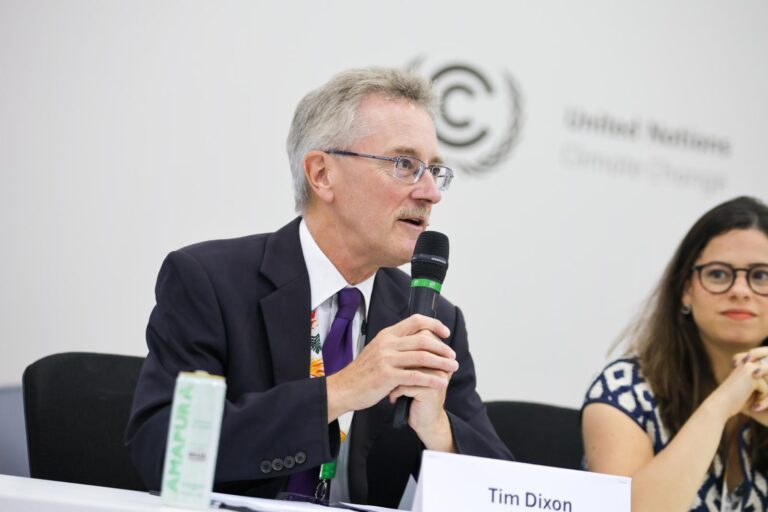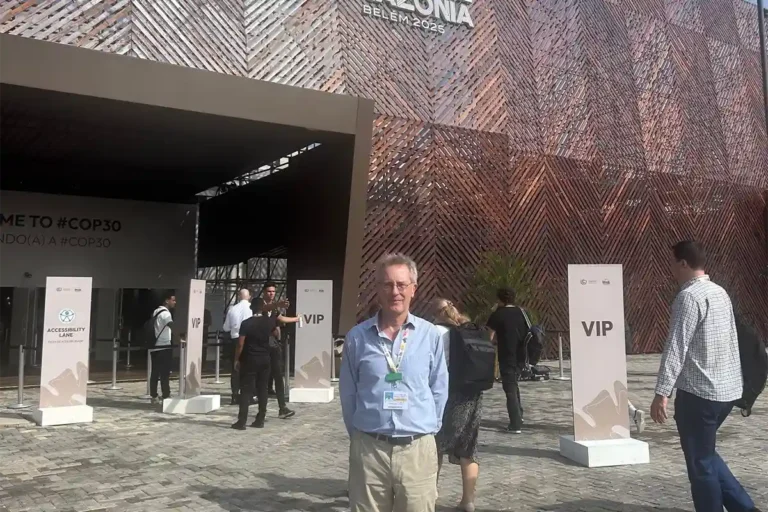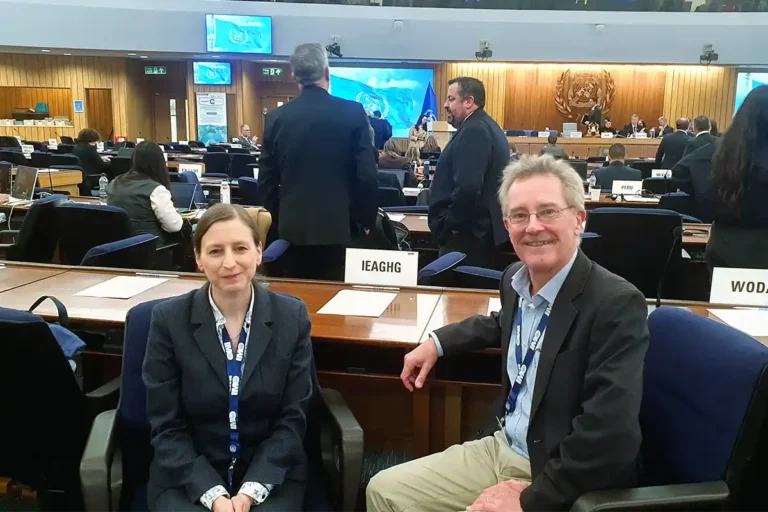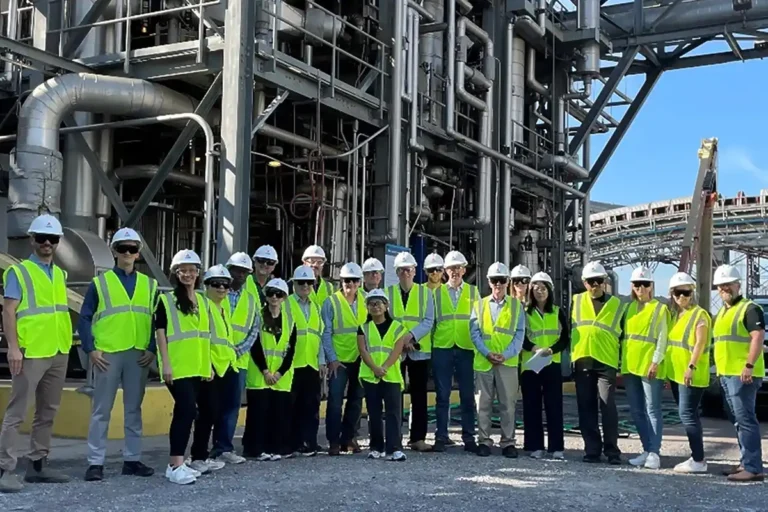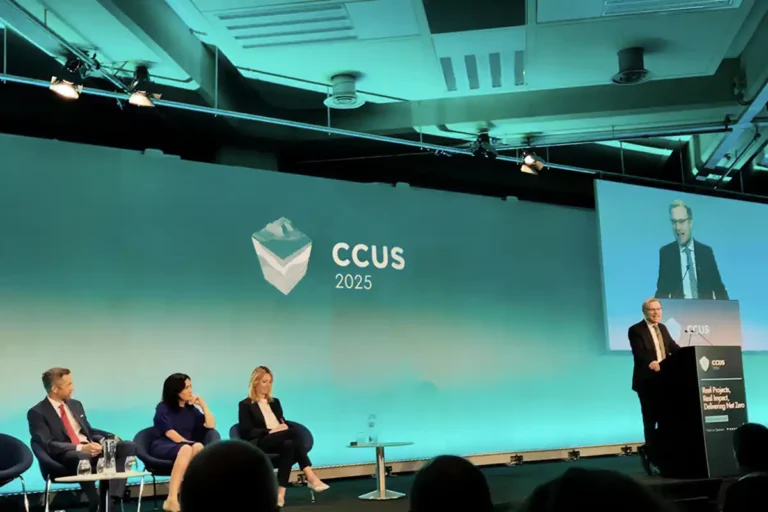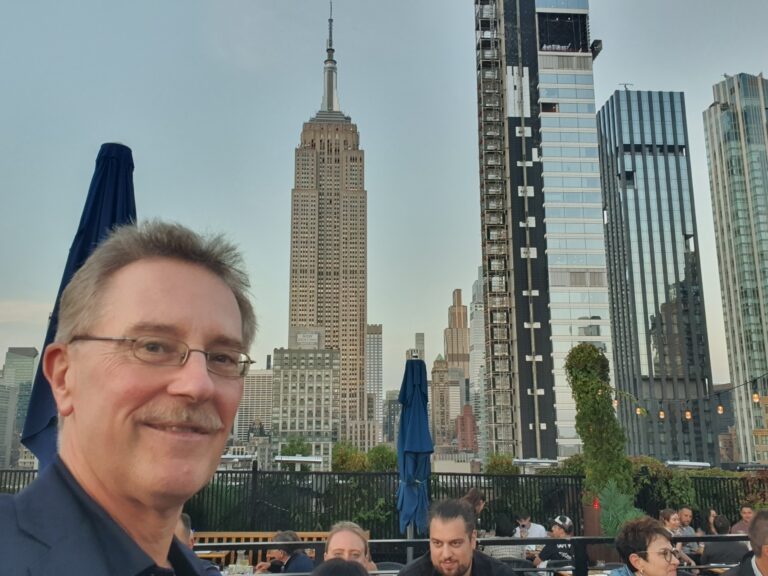
Blog on FECM NETL Carbon Management Meeting
11 September 2023

The annual FECM NETL Carbon Management Meeting which is held in Pittsburgh each year is seeing unprecedented growth, both in attendance with over 1200 people registered, up from 700 last year, and also in the range of projects presented. It’s an exciting time to be in Carbon Management with great momentum, but also plenty of challenges to overcome.
The meeting spans a wide range of topics and has five parallel streams: point source carbon capture; carbon dioxide removal; carbon conversion; and two carbon transport and storage streams. Showcasing the over 150 US Department of Energy sponsored projects. It is a packed schedule, with demonstrations and poster sessions to supplement the oral presentations. There is also ample time to catch up with conversations over coffee and refreshments in the spacious central hall. The organisation was seamless and credit to the organisers for hosting such a well-run event.
For the transport and storage streams, there were a range of themes including updates on regional initiatives; updates on CarbonSAFE Phase II and III projects; carbon transport and storage infrastructure; data management and storage (via the EDX platform); wellbore integrity; mineralisation; monitoring and plume detection; secure storage; offshore projects and R&D; NRAP and the SMART initiative (advanced machine learning). Everything from measuring stress at borehole scale to basin scale screening of legacy wells.
Seeing the advancement of regional programs and initiatives was inspiring. The Environmental Protection Agency which has responsibility for overseeing the class VI well applications (wells that permit the injection of CO₂) has now received 119 applications across 40 projects. These are for all states except those that have ‘primacy’ (i.e. they can self-regulate class VI wells within the State), which are North Dakota and Wyoming. Louisiana is in the process of applying for primacy and Texas, Arizona and West Virginia are developing primacy applications. The sheer volume of applications and the detail involved means that these may take 2 years to review.
A strong theme amongst every project on the ground was how best to incorporate community engagement. This was seen as vital from the very beginning of the project and there were plenty of ideas in best practice and ways of engaging communities and stakeholders e.g. over 370 outreach activities by SECARB since 2021 and 950 by CUSP. Ways to address the skilled labour shortage were also addressed and discussed, particularly in the construction industry.
There was considerable growth in projects that are set to evaluate the potential to store CO₂ in basalt, ultramafics (including mapping and evaluating the subsurface distribution of mafic and ultramafic rocks), and mineralisation of mine waste. These unconventional targets aim to look at characteristics and measure carbonation reaction rates and storage opportunities. It will be very interesting to see the ensuing results in the next year.
Evaluation of the offshore as a potential sink for CO₂ continues to gather traction. The offshore is attractive as it has one ‘landowner’, highly suitable geology, fewer wells, and no drinking water issues, it is however more expensive. A range of presentations addressed the offshore: re-use of infrastructure; pipeline evaluation and mapping; how to select a favourable location e.g. avoiding classic structural highs and focussing on the synclines where well density is lower; how to think about pressure space; environmental monitoring and stakeholder engagement. Updates were presented from offshore SECARB, GOMCarb and Project Lochridge. A project that has gathered traction in a relatively short space of time, a testament to the right synergy, but with years of preparation, is the Port of Corpus Christi. Jeff Pollack of the Port of Corpus Christi and Tip Meckel presented their vision for this the largest energy port in the USA. The Port has six environmental precepts and climate action is one of them, so decarbonisation of the area is a good fit. With emitters at hand and a world-class storage complex just offshore. With Texas applying for primacy class VI well applications may have a chance of landing.
Transport of CO₂ is firmly a part of the FECM’s strategic vision and there are provisions for transport in the Bipartisan Infrastructure Law (BIL) with $2.1 Billion for loans and grants in the CO₂ Infrastructure Finance and Innovation Act (CIFA). Pre-FEED studies include Hub designs and in the FEED studies there is $100 million allotted for transport infrastructure studies. All transportation modes are deemed important including rail, trucks, ships as well as pipelines. There are several user-friendly tools available including SimCCS, Carbon Matchmaker and TEA and LCA models. In February 2023 a research workshop was held to develop a CO₂ transport consortium. With over 100 attendees the vision set for the next five years included: ongoing industry; CO₂ impurities; leak detection; repurposing and using different modes of transport. Some takeaways included: the need to compile and curate information; accelerate experimental and modelling RD&D efforts; create pathways to engage and grow; and engage the public in a two-way conversation.
The NRAP (National Risk Assessment Partnership) has now entered its third phase which will run from 2022 through to 2027. Looking to support FECM’s strategic vision to ramp up storage, NRAP is developing its existing tools and adding to these with some new products and looking to enhance its user experience. Of note there were updates on ORION which is used to forecast seismic hazards and the user interface can be adapted depending on the user, e.g. public, regulators, operators or seismologists. Task 4 was presented on the new RAMP product – ‘Risk Based Adaptive Monitoring Plan’ – one to watch as it adds to its functionality in the next year.
NETL’s SMART (Science-informed Machine Learning for Accelerating Real-Time Decisions in Subsurface Applications) Initiative is a visualisation and decision support platform involving 17 US organisations. Phase 1 (2019-21) focussed on proof of concept and the current Phase 2 is looking at field validation of tools developed in Phase 1. The areas of focus are real-time visualisation (‘CT for the surface’), rapid prediction (virtual learning) and real-time forecasting (like an advanced control room). The SMART session at this conference provided updates on work on advanced machine learning and computational methods (including fast and flexible solutions for fluid flow prediction), site-specific data organisation and imaging, site-specific dynamic storage reservoir modelling, and site-specific visualisation and decision support. It is exciting to see the progress in this Initiative since its inception as machine learning and AI become increasingly useful in the CCUS world.
Other articles you might be interested in
Get the latest CCS news and insights
Get essential news and updates from the CCS sector and the IEAGHG by email.
Can’t find what you are looking for?
Whatever you would like to know, our dedicated team of experts is here to help you. Just drop us an email and we will get back to you as soon as we can.
Contact Us NowOther articles you might be interested in
Get the latest CCS news and insights
Get essential news and updates from the CCS sector and the IEAGHG by email.
Can't find what you are looking for?
Whatever you would like to know, our dedicated team of experts is here to help you. Just drop us an email and we will get back to you as soon as we can.
Contact Us Now

